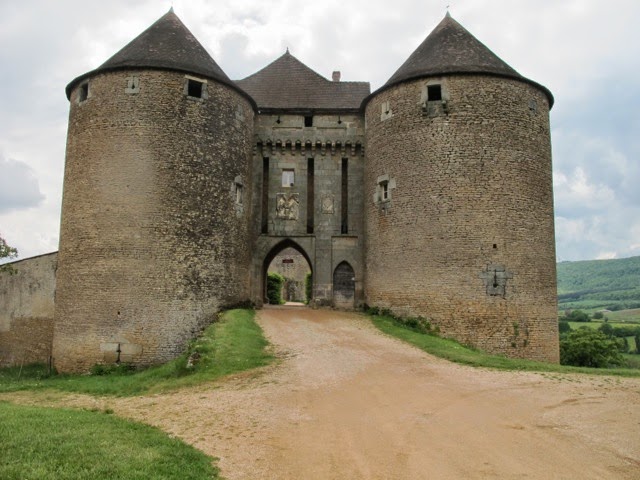 |
| White Camargue horses, one of the oldest breeds in the world |
 |
| Pink flamingoes are just one of 340 bird species in the area |
We rented bikes in Saintes-Maries-de-la-Mer to get across
the dike between the swamps and the sea, so we could see the pink flamingoes,
wild horses and bulls cycling over beaches and little dirt track roads. The Camargue
is basically flat swampland but a haven for birds and the famous horses and
cattle. The "wild" part can be debated as we noted many fences even
though the properties were vast, and the horses and bulls did seem to belong to
somebody so I think the wild should be compared to free range chickens: they
roam freely but are not for everybody to take, and definitely belong to people,
however the setting is wild and vast.
 |
| Black bull roaming the Camargue marshlands |
Given the fact you are right on the sea there were many
restaurants offering seafood platters and the restaurant, La Cave à Huitres, lived up to it's
name with delicious oysters, scampi, shrimp, cockles, mussels etc. It sits on
the waterfront of Saintes-Maries-de-la-Mer named after the two Mary's, Mary
Jacobé and Mary Salomé of the scriptures, who were believed to have arrived
there by boat. One could go to a manade
(bull farm) and learn how they raised bulls and watch a mock bullfight during
dinner if so desired. The other popular (and worthwhile) attraction was the Ornithological Gardens full of
birds in a very pretty setting.
Our drive further east took us by Aigues-Mortes ("dead water"), which is a charming town,
originally a citadel retaining many of its old walls. We followed the road to
Barcelona, turning off where it was marked Andorra, and started climbing into
the mountains. There are many gorgeous towns along the way, Villefranche-de-Conflent (another
citadel) and Prades with a lovely
old abbey nearby, the Saint-Michel-de-Cuxa.
The annual Prades Festival (now named the Casals Festival) specializes
in chamber music and was begun in 1950 when eminent musicians were invited to
play with Pablo Casals to commemorate the bicentenary of the death of Johann
Sebastian Bach.
 |
| Cave exploration in Fontrabiouse |
Our final destination where we were meeting the other participants of the rally was Font-Romeu-Odeillo-Via, a ski resort at 1800 metres (over 5,900 feet) in altitude. The mountains are beautiful with lovely windy roads over mountain passes past the Lac des Bouillouses and through quaint villages. Of further interest to some was the world's largest solar furnace located there. We were more attracted to the nearby grotto of Fontrabiouse which was formed centuries ago by a raging river inside a mountain, and discovered perchance in the 1980's by workers excavating the blue marble quarries when they stumbled upon this deep hole that led them to the vast network of grottoes. The walk through the stalactites and stalagmites was well worth it.
 |
| Joining in the roadster rally |
As we were a group of 80 people we stayed at a ski
residence, but there were plenty of attractive smaller hotels and auberges
nearby. One morning we drove to Andorra,
which is a very small self-contained municipality, and some of the other
participants drove over the border into Spain for some tapas. The food had a
strong Catalan flavour to it, and everywhere the red and yellow flag was
proudly displayed. We saw flamenco dance and an a capella concert of Catalan
songs including Pablo Casals’ “Song of Birds” in an ancient little chapel. It
was a very interesting mix hearing French spoken but being in Catalan country
with its very distinct own identity. People are very friendly and all came out
to wave to our cars driving by.
The drive back to Salernes took just under six hours, so it
would be roughly the same to Nice, about 4 hours to Nice and easily done in a
day.
- Petra Macintosh, Travel Consultant












